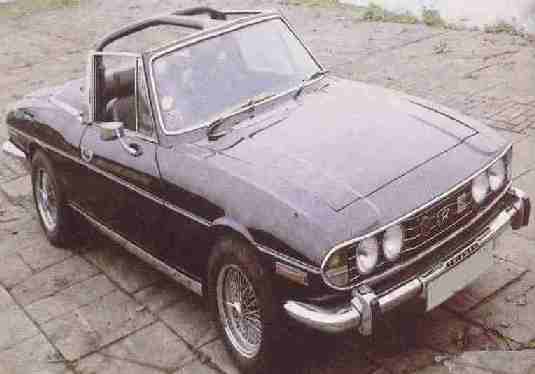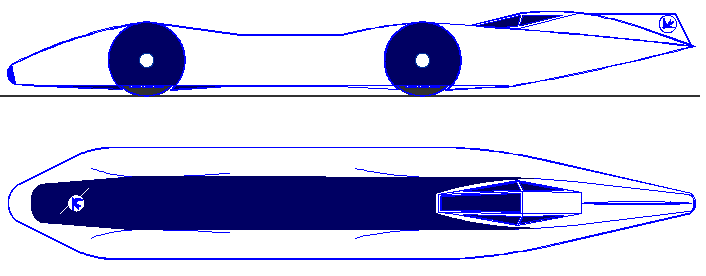|

British Leyland was a vehicle-manufacturing company formed in the United Kingdom in 1968 as British Leyland Motor Corporation Ltd
(BLMC). It was partly nationalised in 1975 with the government creating a new holding company called British Leyland Ltd which became BL Ltd (later BL
plc) in 1978. It incorporated much of the British owned motor vehicle industry, and held 40% of the UK car market, with roots going back to 1895.
Despite containing profitable marques such as Jaguar, Rover and Land Rover, as well as the best-selling Mini, British Leyland had a troubled history. In 1986 it was renamed as the Rover Group, later to become MG Rover Group, which went into administration in 2005, bringing an end to mass car production by British-owned manufacturers—with MG and the Austin, Morris and Wolseley marques becoming part of China's
SAIC, with whom MG Rover attempted to merge prior to administration.
GRADUAL
DECLINE
Sir Don Ryder was asked to undertake an enquiry into the position of the company, and his report, The Ryder Report, was presented to the government in April 1975. Following the report's recommendations, the organisation was drastically restructured and the Labour Government (1974–1979) took control by creating a new holding company British Leyland Limited (BL) of which the government was the major shareholder. The company was now organised into the following four divisions:
Leyland Cars (later BL Cars) – the largest car manufacturer in the UK, employing some 128,000 people at 36 locations, and with a production capacity of one million vehicles per year.
Leyland Truck and Bus – the largest commercial and passenger vehicle manufacturer in the UK, employing 31,000 people at 12 locations, producing 38,000 trucks, 8,000 buses (including a joint venture with the National Bus Company) and 19,000 tractors per year. The tractors were based on the Nuffield designs, but built in a plant in Bathgate, Scotland.
Leyland Special Products – the miscellaneous collection of other acquired businesses, itself structured into five sub-divisions:
* Construction Equipment – Aveling-Barford, Aveling-Marshall, Barfords of Belton and
Goodwin-Barsby
* Refrigeration – Prestcold
* Materials Handling – Coventry Climax (incorporating Climax Trucks, Climax Conveyancer
*
and Climax Shawloader)
* Military Vehicles – Alvis and Self-Changing Gears
* Print – Nuffield Press (which printed the company's publications) and Lyne & Son
* Leyland International – responsible for the export of cars, trucks and buses, and
responsible for manufacturing plants in Africa, India and Australia, employing 18,000
people
here was positive news for BL at the end of 1976 when its new Rover SD1 executive car was voted European Car of the Year, having gained plaudits for its innovative design. The SD1 was actually the first step that British Leyland took towards rationalising its passenger car ranges, as it was a single car replacing two cars that competed in the same sector—the Rover P6 and Triumph 2000. More positive news for the company came at the end of 1976 with the approval by Industry Minister Eric Varley of a £140 million investment of public money in refitting the Longbridge plant for production of the company's "ADO88" (Mini replacement) model, due for launch in
1979. However, the UK success of the Ford Fiesta, launched in 1976, redefined the small car class and ADO88 would soon be cancelled. Massive investment in the Longbridge plant would nevertheless take place in preparation for the introduction of the slightly larger "LC8" subcompact hatchback, which would be launched as the Austin Mini Metro.
In 1977 Sir Michael Edwardes was appointed Chief Executive[8] and Leyland Cars was split up into Austin Morris (the volume car business) and Jaguar Rover Triumph (JRT) (the specialist or upmarket division). Austin Morris included MG. Land Rover and Range Rover were later separated from JRT to form the Land Rover Group. JRT later split up into Rover-Triumph and Jaguar Car Holdings (which included Daimler)
BLCV
In 1978 the company formed a new group for its commercial vehicle interests, BL Commercial Vehicles (BLCV) under managing director David Abell. The following companies moved under this new umbrella:
Leyland Vehicles Limited (trucks, tractors and buses)
Alvis Limited (military vehicles)
Coventry Climax Limited (fork lift trucks and specialist engines)
Self-Changing Gears Limited (heavy-duty transmissions)
BLCV and the Land Rover Group later merged to become Land Rover Leyland.
BL Ltd
In 1979 British Leyland Ltd was renamed to simply BL Ltd (later BL plc) and its subsidiary which acted as a holding company for all the other companies within the group The British Leyland Motor Corporation Ltd to BLMC Ltd.
BL's fortunes took another much-awaited rise in October 1980 with the launch of the Austin Metro (initially named the Mini Metro), a modern three-door hatchback which gave buyers a more modern and practical alternative to the iconic but ageing Mini. This went on to be one of the most popular cars in Britain of the 1980s.
In 1982 the BL Cars Ltd division renamed itself Austin Rover Group marking the end of the Morris and Triumph marques although Jaguar and Daimler remained in a separate company called Jaguar Car Holdings. The Austin Rover Group started a partnership with Honda.
A rationalisation of the model ranges also took place around this time. In 1980, British Leyland was still producing four cars in the large family car sector—the Princess 2, Austin Maxi, Morris Marina and Triumph Dolomite. But the Dolomite was discontinued in August that year - and replaced by the Honda Accord-based Acclaim - in a move that saw the Canley plant in Coventry closed, with the Austin Maxi also being axed a year later. The Marina became the Ital in August 1980 following a superficial facelift, and a year later the Princess 2 received a major upgrade to become the Austin Ambassador, meaning that the 1982 range had just two competitors in this sector. In April 1984, these cars were discontinued to make way for a single all-new model, the Austin Montego.
Jaguar sale
In 1984 Jaguar Cars became independent once more, through a public sale of its shares. Ford subsequently acquired Jaguar. In 1986 BL changed its name to Rover Group and in 1987 the Trucks Division – Leyland Vehicles merged with the Dutch DAF company to form DAF NV, trading as Leyland DAF in the UK and as DAF in the Netherlands. In 1987 the bus business was spun off into a new company called Leyland Bus. This was the result of a management buyout who decided to sell the company to the Bus & Truck division of Volvo in
1988.
Rover Group sale
In 1988 the remaining Rover Group business was sold by the British Government to British Aerospace (BAe). They subsequently sold the business to BMW, which, after initially seeking to retain the whole business, decided to only retain the Cowley operations for MINI production and close the Longbridge factory. Longbridge, along with the Rover and MG marques, was taken on by MG Rover which went into administration in April 2005.
Please
click on the links above to find out about these famous automotive
makers. If your company is not included and you would like to be
listed, please let us know.
UK
VEHICLE INSURANCE ONLINE A - Z
No
matter what car, van or bike you drive, we're all looking for great
value and quality in our UK motor insurance? But who is the best
- who is the cheapest and who offers the great service in the event of
a claim?
See
the insurance companies below who claim to offer competitive cover at
sensible prices, our
guide to the jargon and tips for cutting your quote - Good
Luck:-
Automotive
Prehistory Links
CONTACTS
A
taste for adventure
capitalists

The
world's fastest electric car: 350mph + using energy from nature
|

